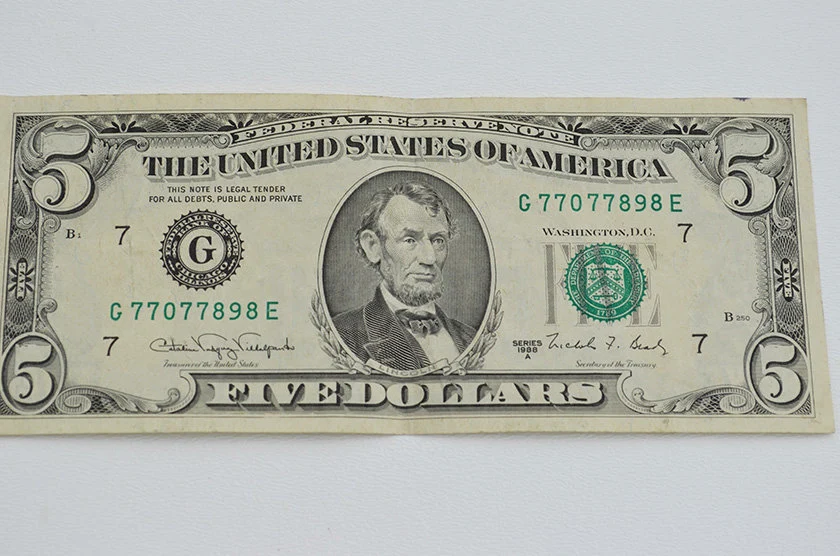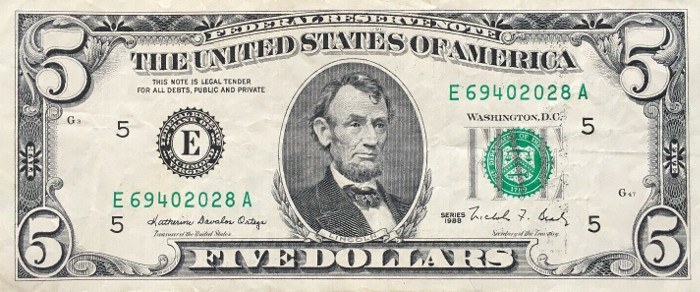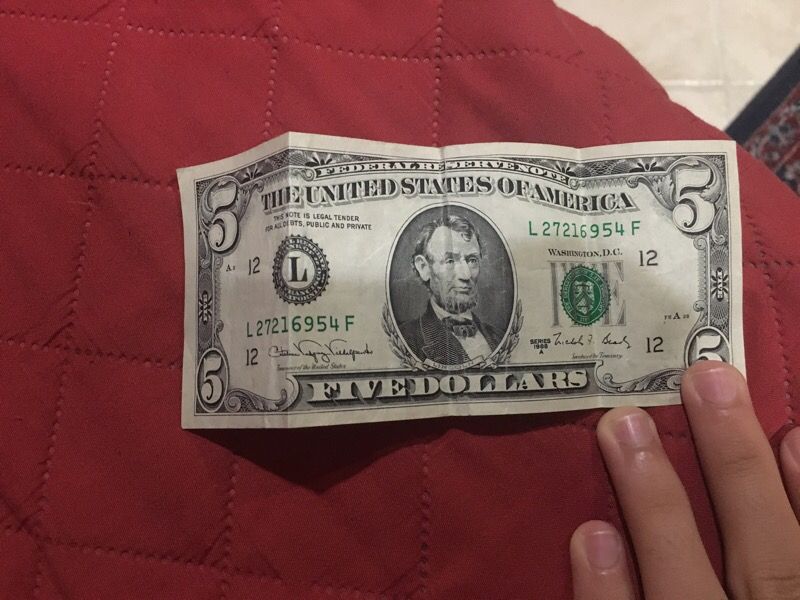If you’re curious about the 1988 5 dollar bill value, you’re in the right place. While most 1988 five dollar bills don’t hold much value beyond their face value, certain factors can significantly increase their worth. The condition of the bill, its rarity, and even special errors or unique markings can make a huge difference in its market value.
Keep reading to learn all about the worth, errors, and factors that affect the value of this particular bill.
1988 5 Dollar Bill: General Information
The 1988 5 dollar bill is a part of the U.S. currency collection from the series issued by the Federal Reserve.
It comes in two distinct varieties: the 1988 series and the 1988A series, both of which feature the same key design elements but differ in some production specifics.

- Denomination: $5.00 USD
- Type: Federal Reserve Note
- Series: Two – 1988 and 1988A
The two series are important in identifying the five dollar bill and its specific features. The 1988A series was printed at two separate locations: Washington D.C. and Fort Worth, Texas.
If you’re looking to determine if your bill came from Fort Worth, check for a small “FW” located near the green seal on the front of the bill. This subtle detail can impact its value.
Value of the 1988 5 Dollar Bill
When asking, “What is the 1988 5 dollar bill value?” it’s essential to consider the condition of the bill. Most bills in circulated condition won’t exceed their face value of $5. However, certain bills in excellent condition or with unique characteristics like star notes or printing errors can be worth much more.
- Very Fine Condition: A 5 dollar bill from the 1988 series or the 1988A series in very fine condition typically sells for around $6. While this isn’t a substantial increase, it’s a small premium over the original $5 face value.
- Uncirculated Condition: Bills that are graded MS 63 (choice uncirculated) can sell for significantly more. These notes, in pristine condition with no signs of wear, can fetch approximately $17.50. However, keep in mind that uncirculated bills are rarer and harder to find.
Star Notes and Their Increased Value
Star notes are special replacement bills that are printed by the U.S. Federal Reserve when there’s an issue with a regular bill during production. These star notes have a star symbol at the end of the serial number, making them highly collectible and valuable.
For the 1988 5 dollar bill, star notes are significantly more valuable than regular bills. The value of these notes can vary based on their condition and rarity, but here are some typical values:
- 1988 Star Notes: A standard star note from the 1988 series is usually worth around $20 in very fine condition. If the note is uncirculated and graded at MS 63, it could be worth around $45 to $50. Star notes issued from the Federal Reserve Bank of Boston are particularly rare and highly sought after, with uncirculated versions reaching prices of about $90.
- 1988A Star Notes: The 1988A series also features star notes, but they tend to be less valuable than their 1988 counterparts. Star notes printed in Washington D.C. can go for around $12.50 to $15 in very fine condition. If they’re uncirculated and graded MS 63, the price can increase to around $35 to $40.
- 1988A Series Star Notes from Fort Worth: These bills are typically worth around $15 in very fine condition. In uncirculated condition, the price can reach $35. Star notes issued by the Federal Reserve Bank of Atlanta from this series are even more valuable, with prices reaching around $165 for uncirculated notes in MS 63 condition.
What’s the Error on the 1988 5 Dollar Bill?
While the 1988 5 dollar bill may not be known for major design flaws, there is a notable error that has caught the attention of collectors. Some bills from this era feature a printing error on the front of the bill. This error occurs when there is a misalignment of ink, causing some of the ink from the front of the bill to appear where it shouldn’t.
Specifically, you’ll notice this error on the bottom right corner of the bill, where ink that should be on the back of the bill has been mistakenly printed on the front.
If you flip the bill over, you might also see a blank area extending into the middle of the bill, where printed information should be. These errors make certain 1988 $5 bill versions unique, increasing their desirability and value among collectors.
How Much is $5 in 1988 Worth Today?
You might be wondering, “How much is $5 in 1988 worth today?” The purchasing power of money has changed significantly over the years due to inflation. According to the U.S. Bureau of Labor Statistics, $5 in 1988 is roughly equivalent to $13.34 in today’s money. That’s an increase of $8.34 over 37 years, or a cumulative price increase of 166.78%.

So, while the 1988 5 dollar bill itself may not be worth much more than $5, the value of that $5 has certainly increased over time when adjusted for inflation.
Grading System: Understanding Bill Conditions
To assess the 1988 5 dollar bill value, it’s crucial to understand the grading system that collectors use to evaluate the condition of currency. There are several grades, and each affects the bill’s worth.
Very Fine: This is the grade given to a note that has been circulated but not excessively. It shows signs of wear, such as small creases or folds, but is still relatively crisp. A 5 dollar bill in this condition will be worth a bit more than face value, but it won’t command the premium that higher-grade bills fetch.
MS 63 (Choice Uncirculated): A bill in this condition shows no signs of circulation. It retains its original crispness and is well-centered. A 5 dollar bill graded MS 63 will fetch a significantly higher price than a very fine note, especially if it’s a star note or has unique characteristics.
Final Thoughts on the 1988 5 Dollar Bill Value
The 1988 5 dollar bill value largely depends on the bill’s condition, its series, and whether it’s a star note or contains any notable errors. Most bills from this series will only be worth their face value, but bills in exceptional condition or with unique features, such as errors or star notes, can command higher prices.
If you happen to have an 1988 5 dollar bill in excellent condition, or if you discover a rare star note or an error on your bill, you could find that its worth is much higher than $5. So, keep an eye out for those rare, valuable bills, and if you’re unsure about a particular bill, consider consulting a currency expert or dealer for a more precise evaluation.
In the world of coin and currency collecting, even the most seemingly ordinary bills, like the five dollar bill, can hold hidden treasures if you know what to look for!

